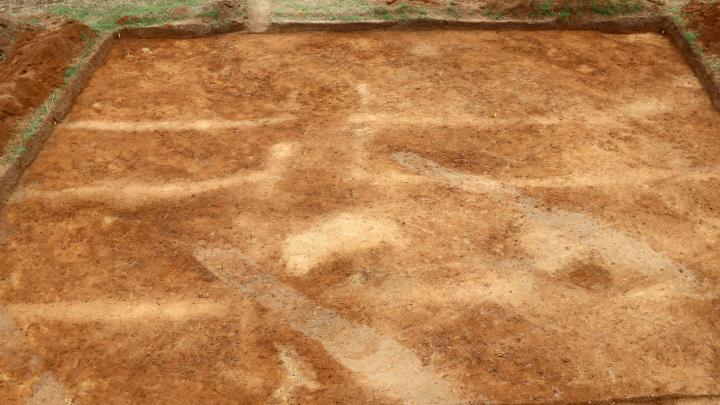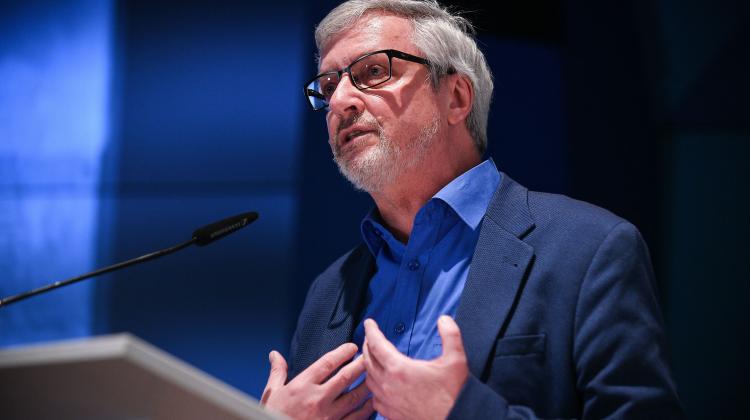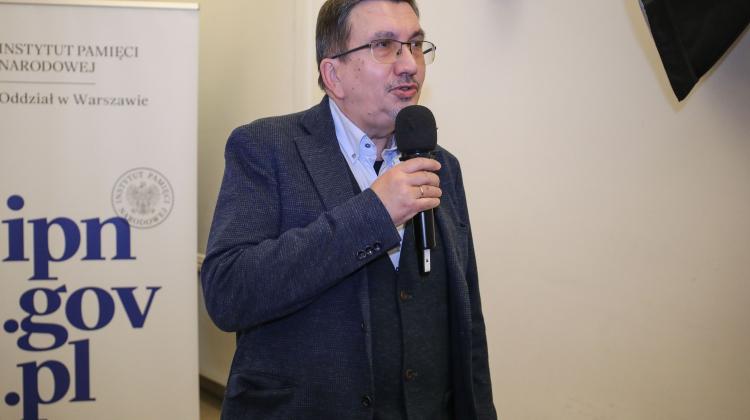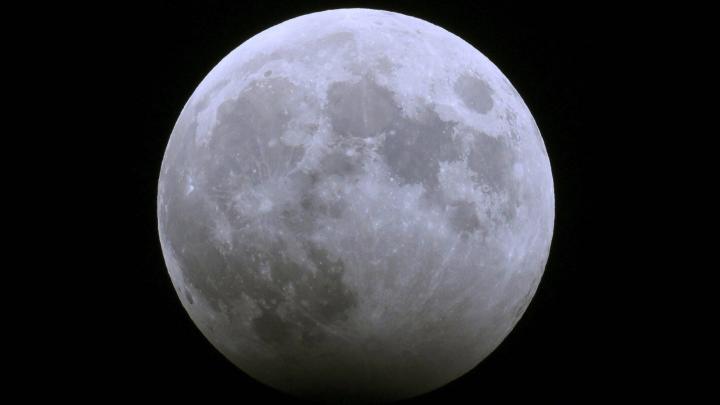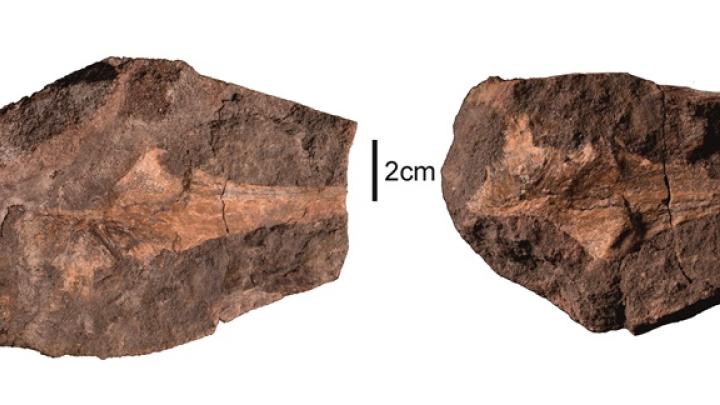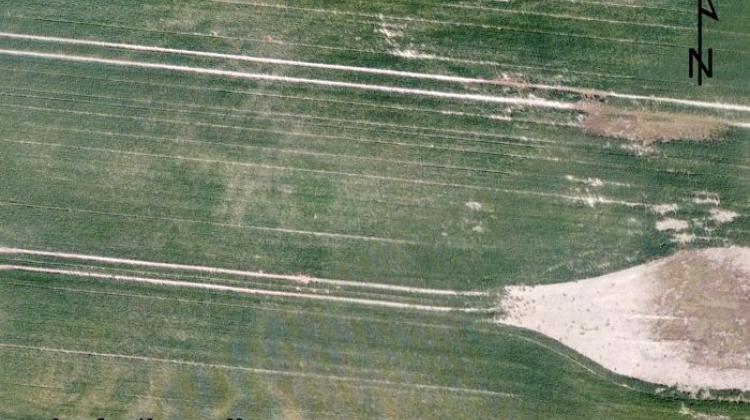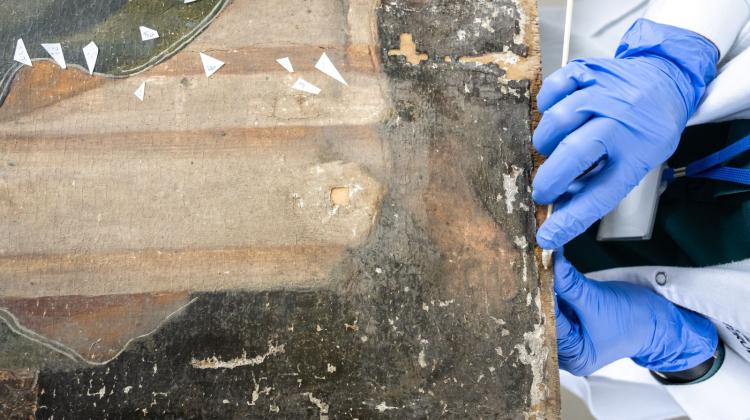Scientists uncover sensational findings at neolithic site of worship
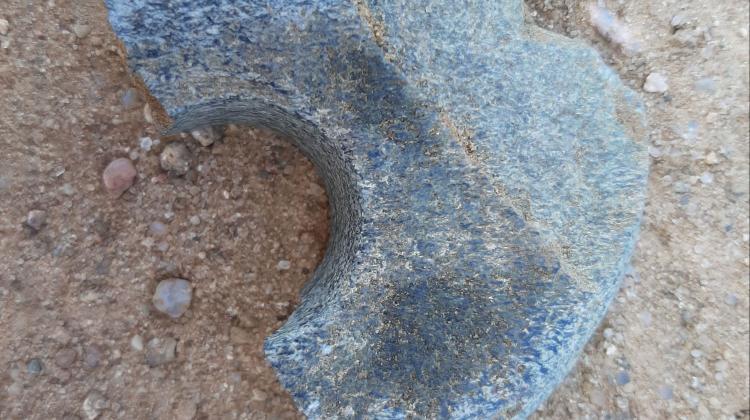 A fragment of a stone axe. Credit: Agnieszka Matuszewska
A fragment of a stone axe. Credit: Agnieszka Matuszewska
An ancient place of worship has revealed its secrets following scientists’ radiocarbon dating.
The neolithic structure named ‘Roundel’ in Polish because of its shape resembling a saucepan, was discovered in 2017 in New Objezierz (West Pomeranian Voivodeship).
But now researchers have discovered that it was built before 4800 B.C. and functioned for about 200-250 years, a lot longer than archaeologists thought.
"This is quite sensational, given the fact that it coincides with the dating of structures located on the Danube, considered the oldest. It seems equally important that the four ditches surrounding the central area of the structure probably did not function simultaneously, but every few dozen years, a new ditch with an ever larger diameter was dug," said the project leader, Professor Lech Czerniak from the University of Gdańsk.
He added that dating more than a dozen further samples should allow to specify how often the ditches were renewed. Thanks to this, it will be possible to determine the "ritual calendar", according to which the object was used. "It is worth realizing that many so-called pre-literate communities celebrated the most important holidays once in a few, or even a dozen or so years, but very intensely,” he said.
Measuring 110 m in diameter, the structure consisted of four circular ditches with a central part protected by three palisades. Three gates led into the interior.
Since September last year, interdisciplinary research has been carried out using the latest methods to determine the function of the structure and provide information on the lives of communities living in its vicinity.
This year, scientists conducted two types of research. They used non-invasive method to study the eastern part of the object and areas located north, south and east of it. Excavations were conducted around the so-called south and west gates.
"In the excavation within the west gate, we revealed the relics of four ditches. Their depth was from 1.3 to almost 2 m. Similarly to the other two gates, we also registered relics of the triple palisade," Dr. Agnieszka Matuszewska from the University of Szczecin told PAP.
According to Matuszewska, during this year`s research archaeologists found numerous fragments of ceramics, flint and stone products, animal bones, as well as several lumps of pugging, shells, dye (ocher) and a fragment of quartzite.
"Compared to previous seasons, we have more bone (472 fragments) and ceramic remains (nearly 1000 fragments of vessels)," the researcher noted. Bone deposits will be analysed by archaeozoologists, and then some of them will serve as samples for radiocarbon dating at the Poznań Radiocarbon Laboratory.
According to the researchers, the radiocarbon dates obtained so far (eleven datings) are the most important findings. They set the object`s functioning time quite precisely at around 200-250 years, and they put the construction of the object before 4800 B.C.E.
According to Dr. Matuszewska, palaeoenvironmental research carried out on site and in its vicinity are a very important part of the project. They are expected to allow to determine the environmental impact of the communities using the roundel in the first half 5 millennium BC.
"But the primary focus of the project are questions about the social aspects of the functioning operation of roundels, including what prompted the inhabitants of a given region to make a huge effort in building and maintaining the roundel, where the idea and knowledge necessary to build this object came from, and how often and for how long the object was used," said Professor Czerniak.
Researchers explain that roundels were of particular importance to local communities because of their structural and ritual connections with cosmic forces. This is indicated by azimuths that can be determined between the central point of the object and its gates. It is puzzling that they functioned in a fairly limited area (today`s Hungary, Austria, Czech Republic, Slovakia, Germany and Poland) and for a relatively short time between 4850 and 4600 BC. However, similar objects in terms of function, and to some extent also form, were built in different eras and regions of Europe. The most famous such object is Stonehenge.
In the third season of research of the object in New Objezierz, researchers (archaeologists and researchers specialising in other disciplines) from Gdańsk, Poznań, Szczecin and Warsaw, as well as students participated. The research is financed by the National Science Centre.
PAP - Science in Poland, Elżbieta Bielecka
emb/ agt/ kap/
tr. RL
Przed dodaniem komentarza prosimy o zapoznanie z Regulaminem forum serwisu Nauka w Polsce.



